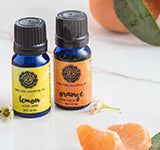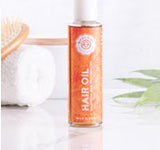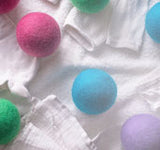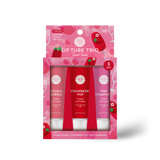DIY Crafts: How to Make All-Natural Cold-Pressed Soap Scented with Essential Oils

Do you like crafting and learning new creative skills? Making soap using all-natural ingredients is a creative, fun and rewarding craft! You can make soap that won't irritate your skin or harm the environment.
Woolzies offers a collection of high-quality essential oil blends specifically for use in DIY soap making. These allow you to conveniently customize the aroma of your soap while providing wonderful benefits for the mind and body.
Keep reading as we walk you through how to make DIY cold process soap scented with our pure essential oils.
DIY Cold Process Soap: What You'll Need
You'll need the following ingredients and equipment to make 5 (3.5 oz) bars of gentle, lathering soap from scratch:
¾ Cup cool water
¼ Cup lye (sodium hydroxide) – try buying this online or at a hardware store
⅔ Cup coconut oil
⅔ Cup olive oil
⅔ Cup sweet almond oil
Woolzies Essential Oil set for soap making
Measuring cups
Pot
Cooking thermometer
2 Plastic, glass or stainless steel containers
Silicone molds or plastic containers for setting the soap
Stainless steel stick blender
Spatula
Safety glasses
Latex gloves
Apron
Tips for Soap Making Success
Making soap requires mixing fats with an alkali (in the form of lye or sodium hydroxide) to cause a chemical reaction called saponification. Lye is essential in the process, but it’s a highly corrosive substance and can be tricky to work with. Don't fear – it's safe when used properly and no lye is left over in the final soap product.
To encourage a safe and successful process we recommended following these tips:
● Ensure all ingredient measurements are accurate
● Work outside or in a well-ventilated area
● This fun craft shouldn't involve the kids – keep children and pets away when using lye
● If you get lye on your skin, rinse it off quickly with cool water
Step-by-Step Method
It's time to make soap!
Step 1: Make sure you're in a ventilated area, wearing protective glasses, latex gloves and an apron.
Step 2: This step requires caution. Pour the water into a container and slowly and carefully add the pre-measured lye to the water, stirring gently with a spatula until dissolved. Don't breathe this in! It will start generating heat. Set this aside and let it cool until it reaches 100–110°F.
NOTE: Never add the water to the lye – it will cause a dangerous reaction.
Step 3: In another container, heat up and melt the coconut oil over a double boiler on the stove. Take it off the heat and add the softer olive and sweet almond oils into the mixture. You want this to be about the same temperature as the lye mixture, 100–110°F.
Step 4: Pour the lye mixture gently into the oil, stirring slowly with a spatula for a few minutes. Next, submerge the stick blender into the liquid (make sure it's fully submerged before switching on) and blend on and off until it stiffens up and reaches "trace." Trace means that saponification has started and there is no longer a separation between the lye and the oils. The mixture should be an almost pudding-like consistency.
Step 5: At this point, add roughly 50-100 drops of Woolzies Essential Oil Blend from our soap making set. Briefly pulse the mixture again with the blender.
Step 6: With the help of a spatula, pour the soap into your silicone molds or plastic containers. Smooth the surface and gently tap the mold on a surface to eliminate air bubbles. Make sure to keep latex gloves on during this process.
Step 7: Place the molds somewhere safe and cool for 24–30 hours.
Step 8: The soap is now set and safe to touch without gloves. Remove from the molds and, if necessary, cut into bars.
Voila, you have soap! Well, almost. Cold process soap will need to be cured for 4–6 weeks… but it'll be worth it.
Step 9: Line the bars up on a drying rack and leave in a cool, dry place to cure for 4–6 weeks. Turn the bars once every day or so for the first few weeks and once a week thereafter. This is important for completing the saponification process, so the soap hardens and has a better lather.
Your homemade natural soap bars are now ready for you to enjoy their protective properties and luxurious scent!
Let us know; what are your tips and tricks for soap making and your favorite essential oil blends to fragrance soap?
Resources
Recipe adapted from: https://www.diynatural.com/how-to-make-soap/
Suggested Posts
Tips and Tricks for Dealing with Anxiety and Panic Attacks
Racing heart? Fearful thoughts? Chest tightness? These are all hallmarks of anxiety and panic disorder. If you're struggling with debili...
Focus on: Cedarwood Essential Oil
Are you looking for a warming essential oil with a woody aroma and grounding properties? Woolzies Cedarwood Essential Oil has a beautifu...




